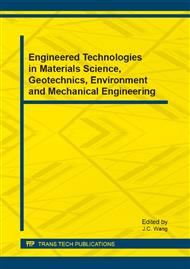[1]
YuJin Zhang. Image Engineering: Image Processing (2nd Edition), TUP Press, Beijing, China, 2006.
Google Scholar
[2]
D. J. Hurley, M. S. Nixon and J. N. Carter, Force field feature extraction for ear biometrics, Computer Vision and Image Understanding, Vol. 98, No. 3, 2005, pp.491-512.
DOI: 10.1016/j.cviu.2004.11.001
Google Scholar
[3]
N. Ahuja and J. H. Chuang, Shape Representation Using a Generalized Potential Field Model, IEEE Transactions PAMI, Vol. 19, No. 2, 1997, pp.169-176.
DOI: 10.1109/34.574801
Google Scholar
[4]
X. D. Zhuang and N. E. Mastorakis, The Curling Vector Field Transform of Gray-Scale Images: A Magneto-Static Inspired Approach, WSEAS Transactions on Computers, Issue 3, Vol. 7, 2008, pp.147-153.
Google Scholar
[5]
T. Grogorishin, G. Abdel-Hamid and Y.H. Yang, Skeletonization: An Electrostatic Field-Based Approach, Pattern Analysis and Application, Vol. 1, No. 3, 1996, pp.163-177.
Google Scholar
[6]
Luo, B., Cross, A. D. and Hancock, E. R., Corner Detection Via Topographic Analysis of Vector Potential, Pattern Recognition Letters, Vol. 20, No. 6, 1999, pp.635-650.
DOI: 10.1016/s0167-8655(99)00028-8
Google Scholar
[7]
B.A. Maxwell and S.A. Shafer, Physics-Based Segmentation of Complex Objects Using Multiple Hypothesis of Image Formation, Computer Vision and Image Understanding, Vol. 65, 1997, pp.265-295.
DOI: 10.1006/cviu.1997.0573
Google Scholar


